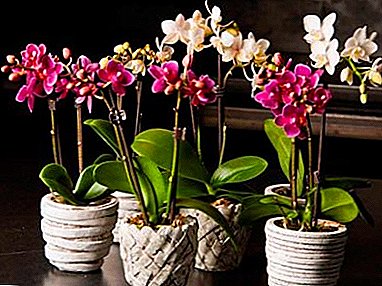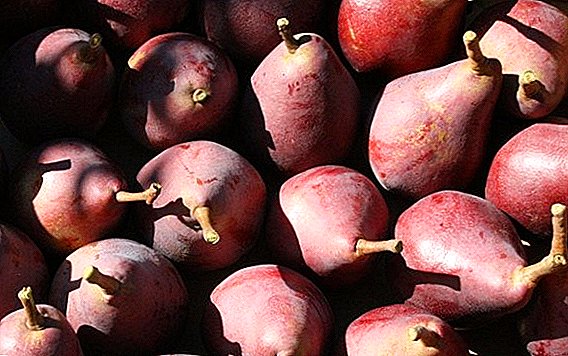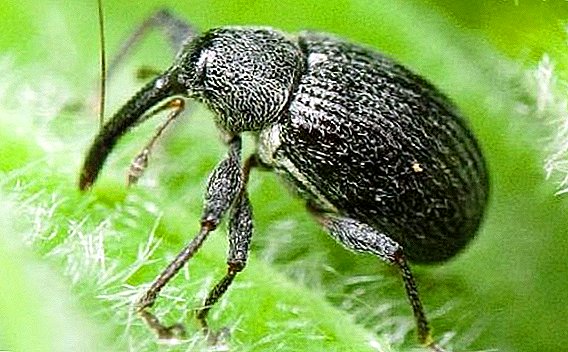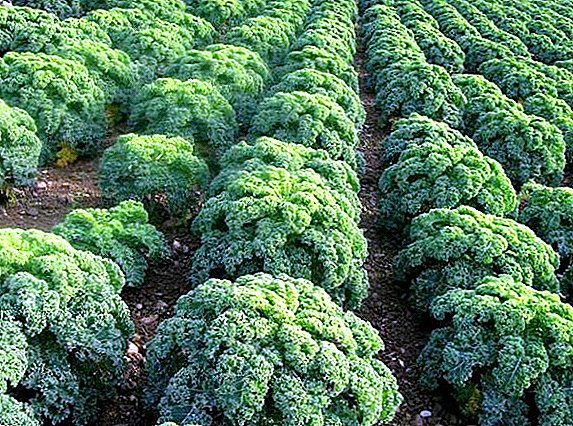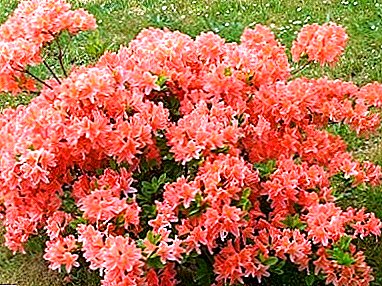
Japanese azalea is one of the species that can grow in open ground conditions. She easily tolerates frosts to minus 26-27 degrees. This shrub, which reaches a height of one and a half meters under favorable conditions, during flowering is like a beautiful cloud.
Biological reference
 The progenitor of this species is stupid rhododendrongrown in Japan. In Japanese gardens, it is used as a hedge, as the bushes are dense and high (about 1.5 m.). The plant is slow-growing, but well-branched.
The progenitor of this species is stupid rhododendrongrown in Japan. In Japanese gardens, it is used as a hedge, as the bushes are dense and high (about 1.5 m.). The plant is slow-growing, but well-branched.
The main advantage of the Japanese azalea is bloom. Around the end of May, it is covered entirely with flowers, behind which sometimes you can not even see the leaves. At the same time there are varieties that differ in terms of flowering. Picking them up on your site, you can achieve the total period of flowering up to two months.
Garden azalea flowers are distinguished by a variety of colors, sizes and textures. The most popular varieties of the Japanese rhododendron are: Carmesina, Rosalind, Melina, Rosinetta, Granny, Elste Lee, Blanik.
Different varieties and stem height. Basically it is a large sprawling bushes of beautiful shape.
A photo
See more photos of the Japanese rhododendron:




Planting and care
The gardener is not a big deal for this plant. But only if you observe some planting rules and requirements for the soil.
Where to plant?
The place for azaleas should be bright, but without direct sunlight. Excessive lighting will cause wrinkling of the leaves, the fall of the buds. In such conditions, the bush will be weak, prone to disease.
Ideal place for planting near artificial or natural reservoirs, as next to them enough moisture for the bush.
How to prepare the soil?
Azalea is very demanding on the composition of the soil. Its roots are located close to the surface, so even if there is inadequate soil in a suitable area, it is easy to replace.
Purchase a special soil mixture for rhododendrons in the trading networks. If this is not possible, mix sour turf, sand, peat and coniferous soil. The pit is a meter wide and half a meter deep filled with this mixture. Lay out a layer of drainage on the bottom (gravel, broken brick)
Do not use as drainage layer. lime rubble. He will deoxidize the soil, and the azalea will die.
How to plant?
 The purchased azalea seedling is removed from the shipping container. When planting, an earthen room should be moistened. If it is dry, put it in a container with water and hold it until bubbles disappear on the surface.
The purchased azalea seedling is removed from the shipping container. When planting, an earthen room should be moistened. If it is dry, put it in a container with water and hold it until bubbles disappear on the surface.
The moistened bush is immersed in a hole in the middle flush with the edges. The remaining space is filled with prepared soil substrate and compact the surface. Planting spill and mulch with a mixture of peat and needles.
Do not sprinkle with mulch close to the trunk - the root neck should remain on the surface.
Watering
Only irrigated water is suitable for irrigation. Do not water the azalea with water directly from the aqueduct, due to the content of lime lime and chlorine.
The soil under the azalea should be wet, but not too wet. From stagnant water azalea can rot. When the earth dries out, the azalea is under stress and, as a result, it sheds leaves and flowers.
Watering is stopped by the end of August. This is necessary to stop the growth of new shoots that can freeze in the winter and harm the plant.
What to feed?
Fertilizing is carried out with a special fertilizer every month from the end of March to August. Do not fertilize only in the first month after the habit.
They stop feeding in August, because at this time the plant starts preparing for winter. If you conduct additional feeding later, the growth of new shoots will begin and the plant may freeze in winter, without gaining strength for wintering.
Do not use for dressings popular in gardening the ashes. It will remove the soil acid necessary for the plant.
Pruning
15-20 days after flowering, pruning of the bush is performed. The purpose of the procedure is to remove wilted shoots, thinning. It is generally recommended to delete extreme branches. Sections are covered with garden pitch, paint or linseed oil. In addition to pruning during flowering need to remove withered buds. Pruning and removal of azalea flowers are necessary for laying new buds.
How to cover rhododendron for the winter?
 Preparing for winter is an important stage of plant care. Before the onset of frost, do the following:
Preparing for winter is an important stage of plant care. Before the onset of frost, do the following:
- Water-charging irrigation. It is carried out before the soil freezes, especially necessary in arid autumn.
- Mulching pristvolnogo circle. The layer of mulch should be at least 5 centimeters, it will protect the roots from freezing. Use pine needles, wood chips, chopped wood chips.
Do not remove fallen leaves from azalea bushes - it will fulfill the role natural mulch layer. Shelter: Azalea branches in the winter bend down to the ground and fixed in this state with the help of wire slingshots. Young copies additionally covered with spruce branches.
- If, according to weather forecasts, severe frosts are coming, the azalea must be additionally covered with material in several layers. This is done using a wire frame or U-shaped fittings installed crosswise. Between the bush and the shelter, leave a distance of at least 20 centimeters so that the material does not damage the bush. Raise one side of the shelter, providing air access. Fix the other sides with a load or pour it with earth. Finally, all parties can be closed only with the onset of stable frosts, with an average daily temperature of minus 10.
- Protection from the spring sun. Closer to spring, cover the bush additionally with covering material. This is to avoid burns of the plant in the spring. They take shelter after complete snow melting.
- Preventing root flooding with melt water. Drain the water in time so that the water does not stagnate under the bush, otherwise the azalea roots will rot.
Diseases and pests
 The most common pest is azalea aphid. It secretes a liquid covering the leaves. On these secretions subsequently appears black mushroom and red mite.
The most common pest is azalea aphid. It secretes a liquid covering the leaves. On these secretions subsequently appears black mushroom and red mite.
You can stop the growth of the fungus with fungicides.
Aphids are destroyed by spraying. Melatonin.
A red tick can also appear when there is insufficient watering and the earthen clod is dry.
The appearance of white bloom on the leaves indicates infection. spider mite. First, it strikes the inside of the leaf. The leaves curl at the same time, of which the pest sucks the juice. Struggling with tick Agravertin or Diazinon.
Leaf blackening says that the black thrips settled on the plant. This insect is 1 millimeter long and settles on the inner side of leaves, blackish spots appear on the upper surface. Destroy thrips Karbofos.
Mealybug - sucks the juice from the leaves, multiplies rapidly. It prevents the occurrence of treatment with Karbofos twice a season. In early June, the plants are treated for the first time.
 Flowers feasts Rhododendron mite. When it appears, the petals are covered with black dots - these are tick excrements. Destroy it with Diazonin.
Flowers feasts Rhododendron mite. When it appears, the petals are covered with black dots - these are tick excrements. Destroy it with Diazonin.
Often the azalea begins to disappear even in the absence of signs of pests. This phenomenon indicates the infection of a plant with a fungus. It provokes the appearance of fungus low temperature and high humidity in the summer.
- Late blight. Root rot in which the leaves roll up and turn black. For prophylaxis, treatment with copper-containing preparations (Xom, Oxy) or Bordeaux mixture is carried out.
- Chlorosis. A rare disease that occurs in wet weather. Manifested in the form of white bloom on the leaves. Add nitrogen and potash fertilizers to plants - in a few days the spots will disappear. For prevention, repeat the procedure after 2-3 weeks.
- Fusarium wilt. Azalea with the defeat of it begins to fade, the leaves turn black. Seeing this, process the plant with Fundazole. If the azalea is severely affected, it is unlikely to be saved.
 Any disease is easier to prevent than to cure. To avoid diseases and pests of azaleas, take a number of preventive measures:
Any disease is easier to prevent than to cure. To avoid diseases and pests of azaleas, take a number of preventive measures:
- Processing plants at the beginning of the vegetative period with copper chlorine. Due to the fact that azalea leaves have a thin surface, the fungus easily penetrates the tissue. Copper will create a thin film on them and prevent contamination.
- The next treatment is spraying with Fundazole. This not only prevents diseases, but also treats them in the early stages.
- Enhance immunity. This task will help cope with nitrogen. Fertilization will help the plant to independently combat diseases and pests.
Observing these simple rules of care will help you to decorate your garden with beautiful abundant flowering shrubs.


